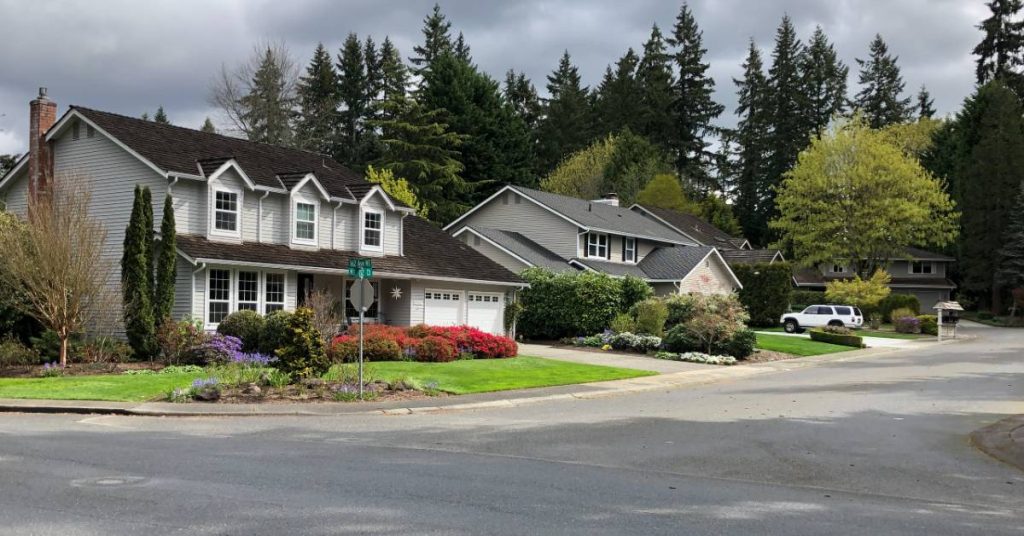In early 2022, I realized my six-figure position at a top-5 U.S. lender was on the chopping block.
I was in charge of building up website traffic for a new company website. When mortgage rates shot up, I knew the company would focus on surviving, not building its online presence.
In mid-2022, my prediction proved accurate and they eliminated the project I was working on…and my position.
Luckily, before that happened, I set up a home equity line of credit, or HELOC, as an emergency fund.
I didn’t draw any money out of it (and I still haven’t). It’s simply an open line of credit upon which I can draw whenever needed. Here’s why you should do the same if you’re able.
Start your emergency HELOC before you need it.
Why set up a zero-balance HELOC for an emergency fund?
There’s a funny rule about borrowing money: you can do it until you need to.
Lenders like to see that you have money in the bank, small debts, and high income to approve you for a loan.
The only problem with that is, once you lose your job, you’re not eligible for most loans. Especially mortgages and home equity loans.
That’s why it’s important to open up a line of credit on your home, even if you don’t plan to use it and your job isn’t in immediate danger.
You can open up a zero-balance HELOC. Avoid drawing funds until you need them. You pay zero interest costs until you draw out money.
Everyone is just one meeting with the boss away from unemployment. You likely have no idea what the presidents and CFOs are talking about behind closed doors. I know, because I’ve been a part of decision meetings to cut costs and eliminate positions.
A big mistake is to assume you’ll have a job tomorrow and put off opening an emergency HELOC. Apply while you don’t need it!
Start your emergency HELOC before it’s too late.
How to set up an emergency HELOC
I recommend a local credit union for your HELOC lender.
Credit unions are more likely to have zero-closing-cost HELOCs that don’t even require an appraisal. Also, many allow you to open the HELOC without drawing anything out at closing.
You don’t want to have a HELOC balance if you don’t need it. At today’s interest rates, you’ll likely pay about a 7-8% interest rate on any funds borrowed.
My local credit union let me open a $250,000 line of credit with no appraisal and no closing costs. I didn’t have to draw anything at closing. To this day, it’s sitting there available to me, but it hasn’t cost me a cent in closing costs or interest.
To find the same deal, you might have to call around to some local banks and credit unions.
It’s also worth checking with national lenders. Do that here.
Here’s your checklist for what to ask:
Questions to ask your HELOC lender
1. Are there any closing costs?
2. Do you require an appraisal?
3. How much can I borrow assuming X home value and X current 1st mortgage balance? (Some credit unions will let you open a line of credit up to 100% of the home’s value.)
4. Do I have to draw any funds at closing?
5. Are there any annual fees, early termination fees, or other costs?
6. What’s the current interest rate for my scenario?
7. How is my rate calculated (prime rate + 0.50 or prime -0.25, etc.)?
8. Can I lock in a portion of the HELOC at a fixed rate once I draw funds?
If you find the right lender, you’ll end up with a large, zero-balance line of credit that doesn’t cost you anything monthly until you need to draw funds.
How to qualify for a HELOC
You typically need at least 10-20% in home equity to qualify, and that’s if you can find a lender that allows 100% loan-to-value HELOCs.
| Home Value | $300,000 |
| Existing mortgage | $240,000 |
| Maximum total loans (90-100% of value) | $270k-$300k |
| Potential HELOC amount | $30k-$60k |
In the above scenario, the homeowner has 20% equity in the home. Depending on the lender, they can borrow a maximum of 90-100% of their home’s value.
Beyond home equity, you’ll need pretty good credit (probably 660-680+ FICO score). You’ll also provide income verification to prove you can afford the second mortgage payment (which is why it’s important to apply before a job loss).
You may also have to prove that you have assets in a savings or investment account, but this is a less common requirement.
Drawbacks of a HELOC for an emergency fund
Emergency HELOCs are not without their drawbacks.
Extra interest costs: If you get into financial trouble, you could end up borrowing a lot of money. Then you’ll pay interest on the money each month.
Rising rates: HELOC rates are variable. Though it appears that variable rates will fall in 2024, there’s also a chance they could rise.
It’s a lien on your home: Just like your primary mortgage, your home is collateral for the HELOC. If you fail to repay, the HELOC lender can foreclose on the house.
While there are risks to having a HELOC, there’s likely a greater risk of not having one. As I said, we’re all just one meeting away from being unemployed.
Emergency HELOC FAQ
It’s best to have emergency savings. But it’s also a good idea to have a HELOC in place in case of a job loss, medical emergency, or some other income-limiting event. Despite drawbacks, like paying interest on emergency funds, it’s better to have a HELOC in place than to have your home foreclosed or to declare bankruptcy.
Many HELOC lenders will let you take a zero balance at closing. This means you don’t pay any interest until you draw funds. If a draw is required, simply pay it back after closing if you don’t need the money now, assuming the lender allows you to pay it down to a zero balance.
Yes. The HELOC lender will ask for income verification. That’s why it’s important to open a HELOC while you are employed. If you lose your job, you’re no longer eligible. It’s okay to open a HELOC and draw zero dollars at closing so you don’t pay interest unless you tap into the HELOC funds.
Make a decision today
Don’t delay setting up this alternative emergency fund. Yes, it’s always better to have an actual emergency fund, say, 3-6 months of living expenses in a liquid savings account. But if you’re still working on this, why not have a backup source of emergency funds that only costs your time?
If you have any questions about opening a HELOC as an emergency fund, contact a HELOC lender today.


